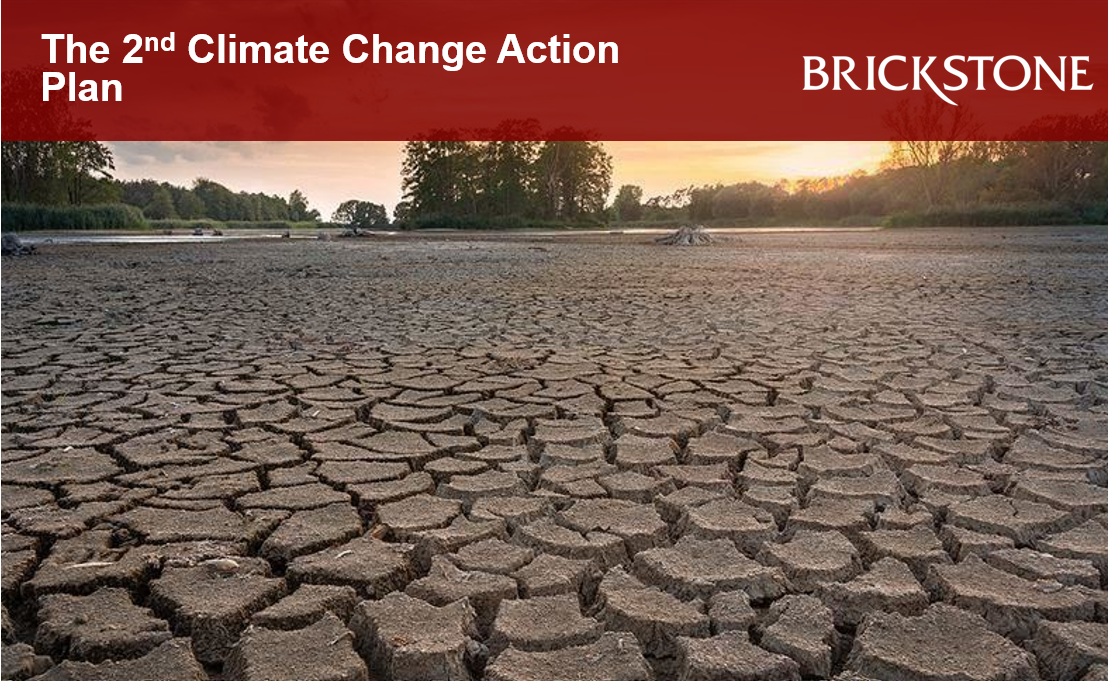The 2nd Climate Change Action Plan
The 2nd Climate Change Action Plan (CCAP2)
Climate change is an increasingly serious threat to Africa as it threatens the lives and livelihoods of over 100 million people in poverty – with rural areas suffering the most – as well as socio-economic development in the continent.
Despite contributing about 2 to 3 percent of global greenhouse gas emissions, Africa is one of the most vulnerable continents exposed to adverse and deleterious impacts of climate change to a disproportionate degree. High levels of poverty, dependence on rainfall for agricultural production, inadequate or non-resilient infrastructure, and lack of social safety nets contribute largely to this already dire situation.
Climate change is cross-cutting, and Africa’s inability to curb these impacts is a major threat to achieving the UN Sustainable Development Goals, AfDB’s High 5s, as well as regional development ambitions such as Agenda 2063.
Drastic considerations and actions are required to be taken by African governments, in partnership with the international community, otherwise the impact of Climate change will remain an existential threat in Africa. These impacts are projected to cause more devastating global consequences in the years to come. This includes leading to increased food insecurity, population displacement, and poverty. The current climate trajectory is predicted to force 100 million people into extreme poverty by 2030.
This article by Brickstone, reviews the 2nd Climate Change Action Plan (2016–2020) completion report published by the African Development Bank Group.
The 2nd Climate Change Action Plan (CCAP2)
The Strategic Vision of the Bank’s Second Climate Change Action Plan (CCAP2) foresees an African continent that is less vulnerable to climate change and develops in a low-carbon manner.
The African Development Bank Group’s second Climate Change Action Plan (CCAP2), built on CCAP1, provides a strategic framework for climate action, addressing African and global development agendas while also highlighting opportunities for collaboration with development partners.
The CCAP2, consisting of four pillars, covered the period 2016 to 2020 but was however extended to 2021 due to the COVID-19 pandemic outbreak.
Pillar 1 is focused on adaptation and climate-resilient development; Pillar 2 on mitigation and low-carbon development; Pillar 3 on climate finance; and Pillar 4 on enabling environment and cross-cutting issues like policies and institutional reforms, capacity development, technology development and transfer, and creation of partnerships and networks.
Through the implementation of the CCAP2 and the mainstreaming of climate change and green growth, CCAP2 is expected to deliver the following:
- Light up and Power Africa investments would account for 22% of climate finance per year by 2020;
- Feed Africa investments would contribute 6% of climate finance per year by 2020;
- Industrialize Africa would contribute 3% of climate finance per year by 2020;
- Integrate Africa would contribute 1% of climate finance per year by 2020; and
- Improve the Quality of Life for People of Africa would contribute 8% of climate finance per year by 2020.
Evaluation of the 2nd Climate Change Action Plan (CCAP2)
According to the African Development Bank Group, CCAP2 was evaluated based on the CCAP2 indicator results framework, and the AfDB’s Results Measurement Framework (RMF) with indicators viewed through a climate change lens. The evaluation addresses CCAP2’s four pillars and the AfDB’s Results Measurement Framework (RMF) levels 1 to 4.
Pillar 1 of the CCAP2 dwells on adaptation and climate resilience. Africans have contributed the least to atmospheric concentrations of greenhouse gases (GHGs) and climate change but are more vulnerable to the impacts than most from other parts of the world. Adaptation is very important to enhance climate resilience by mitigating exposure to climate and related hazards or limiting vulnerability.
The report reflects that despite the fact that most African countries have a national adaptation plan (NAP), law, or policy in place, absence of an effective design and application of these interventions or frameworks remains a weak indicator. Absence of this shows that Climate readiness levels in Africa is unproportionally low compared to the Continent’s vulnerability levels.
According to the AfDB, challenges and barriers hindering the Adoption Action of the CCAP2 include exogenous factors such as military and political crises, lack of knowledge, non-resilient institutional and organizational capacity, inadequate finance, and lack of support in enhancing NDC Implementation Plans.
To mitigate GHG emissions and climate change accruing from the climate impacts of the Industrial revolution, the global world now tilts towards the adoption of policies, frameworks, technologies, and business models that will enhance the achievement of this goal. Though Africa contributes relatively low levels of global GHG emissions, it still needs to decouple growth from emissions.
Premised on the above, Pillar 2 of the CCAP2 covers the Mitigation and Low-carbon development Action Plan in Africa. According to the AfGB, the installation of renewable energy capacity across Africa, installation of new or improved transmission lines and distribution lines, and electrification of road systems are important to achieving this goal.
The finance needed to fund a climate resilient and low carbon environment is extremely huge, hence the extent to which climate finance is able to meet climate ambitions is important. Pillar 3 of the CCAP2 focuses on mobilizing finance to address climate change, including innovations such as mobilising more private finance, to support climate change ambitions. This includes the Private Sector Investment Initiative for African NDCs.
Complex interactions and the wide range of issues are needed to be considered when designing and delivering climate-resilient low-carbon operations and projects. To enhance smooth transitioning and development, an enabling environment, addressing cross-cutting issues, is very important.
Effective adaptation and mitigation actions cannot be undertaken without an enabling environment, which includes adequate institutional capacity in which climate-related investments can be effectively designed and implemented.
It helps if policies and processes are aligned with climate change goals, guidance is available, and capacity is in place. Pillar 4 of the CCAP2 covers the Enabling Environment Action for Africa.
Conclusion
The current situation in Africa is that climate change has an adverse impact on many aspects of life, society, economy, and ecosystems. The risk of these impacts are set to grow due to the rapid accumulation of GHGs in the atmosphere and the lack of ambition when it comes to global mitigation efforts in NDCs.
This therefore calls for the urgency in the need for efficient and drastic actions to be taken by African countries to combat climate change, its conditions and impacts.
The CCAP2, consisting of four pillars, is a strategic approach to improving climate change and its impacts in Africa. This Action plan covered the period 2016 to 2020 but was however extended to 2021 due to the COVID-19 pandemic outbreak. According to the AfDB, the CCAP2 was ambitious with mixed results.
Download AfDB’s full report on the CCAP2 completion here.






